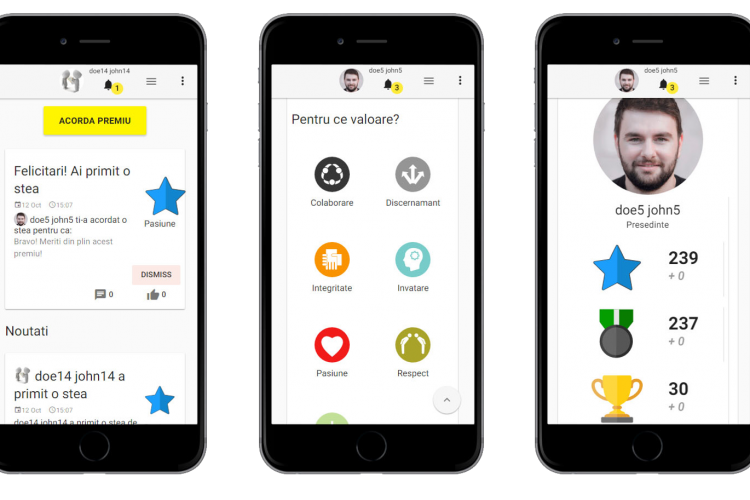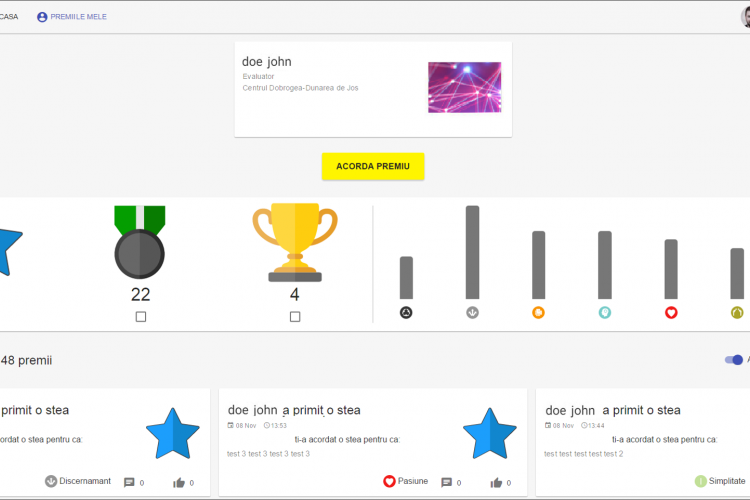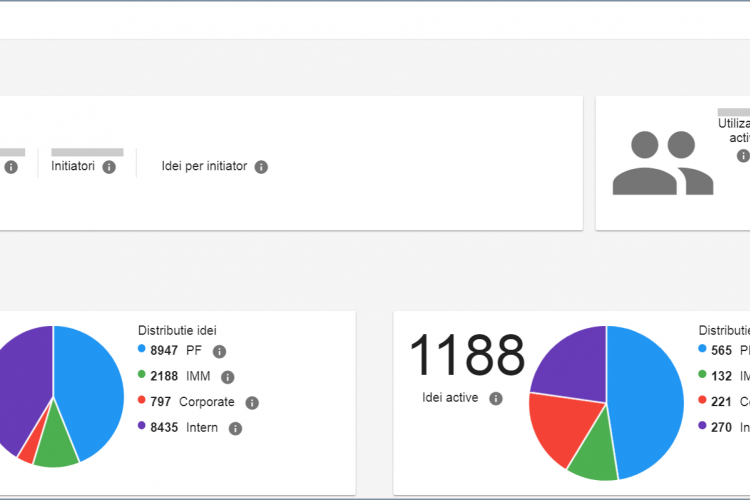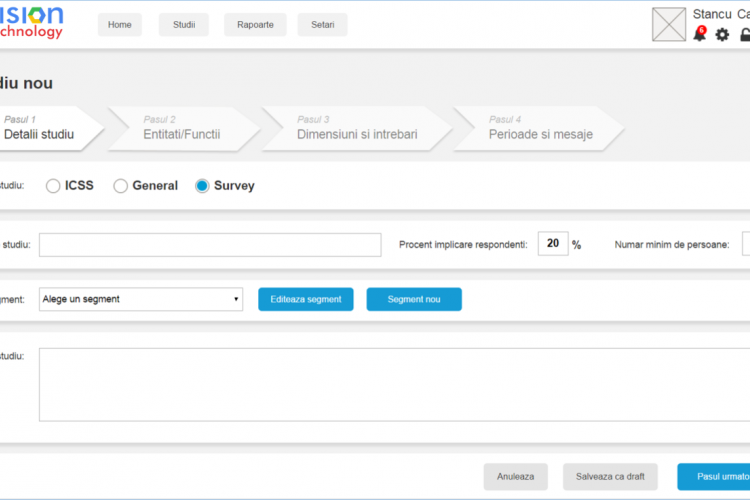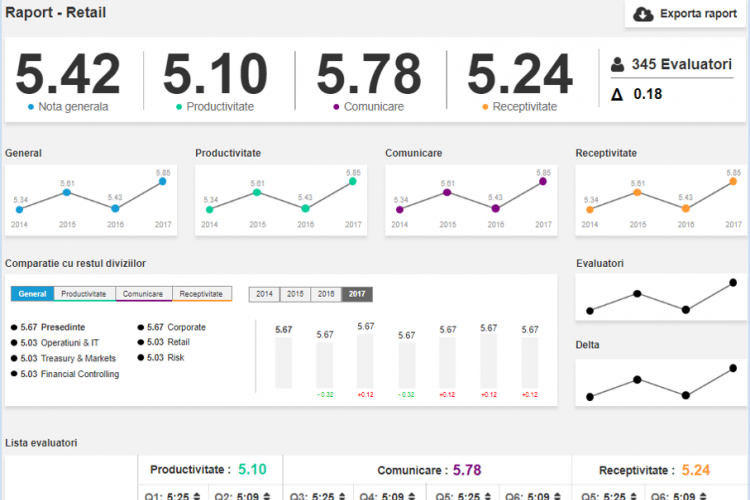Implement company targets with gamification
Vision Agile Management enable your employee with easy to use web 2.0 application allowing to rate each interaction with specific feedback, using game-design elements and game principles in non-game contexts.
The project was implemented for an international bank operating in the financial services sector, headquartered in Bucharest, Romania. The organization sought a solution to improve Agile team performance, streamline evaluation processes, and increase engagement across distributed teams.
Initial Challenges
Adopting Agile practices alone was not sufficient to ensure performance. Teams encountered persistent difficulties such as low engagement, inconsistent velocity, and an absence of structured, continuous evaluation. Without real-time insights or mechanisms to assess individual and team-level contributions, the organization experienced a disconnect between Agile processes and tangible business outcomes. These limitations affected productivity, hindered decision-making, and left managers without the tools needed to address team dynamics effectively.
The Smart Solution
To address these challenges, the bank implemented the Vision Agile Team Management and Gamification platform. This solution placed people at the center of Agile operations, combining project management tools with features designed to strengthen team cohesion and boost motivation. The platform enabled continuous performance evaluation through real-time dashboards, sprint analytics, and customizable KPIs. It aligned team goals with individual contributions, encouraging transparency and accountability. Gamified features such as scoreboards, achievements, and feedback loops increased engagement, while managers gained access to actionable insights about team dynamics, blockers, and development needs. By fostering a culture of measurable progress and mutual appreciation, the platform created an environment where motivation was sustained and performance visibly improved.
Implementation Insights
During implementation, the organization faced resistance to adopting new tools and workflows. This hesitancy risked slowing the transition and limiting the platform’s impact. To overcome these obstacles, the deployment strategy emphasized usability and seamless integration. The platform’s intuitive interface allowed it to fit naturally into existing Agile workflows, reducing friction and encouraging early adoption. Gamified elements such as badges, points, and leaderboards made collaboration more enjoyable, helping to shift mindsets and build enthusiasm. Continuous performance feedback, combined with peer recognition and real-time progress tracking, allowed teams to stay aligned and motivated. These combined efforts created a transparent, high-performing Agile environment in which teams delivered faster and with higher quality.
Results & Impact
The implementation of the Agile Team Management and Gamification platform generated both quantitative and qualitative improvements across the organization.
Quantitative Results:
- Boosted team engagement by over 40%, as gamified incentives sparked motivation and healthy competition
- Improved sprint completion rates by 30%, driven by enhanced visibility and automated feedback
- Reduced project bottlenecks by 25% through real-time performance tracking and proactive issue resolution
Qualitative Results:
- Increased transparency and collaboration across teams
- Positive feedback from users, who highlighted ease of use and integration
- Accelerated Agile adoption, with teams embracing new workflows more quickly and with greater confidence
These outcomes translated into faster project delivery, better quality, and more empowered teams capable of adapting to evolving business demands.
Lessons Learned & Key Takeaways
This project highlighted several important lessons for future Agile transformation efforts. First, user engagement plays a pivotal role in driving adoption—gamification must be tailored to the team's culture to maintain interest over time. Second, real-time feedback is essential, empowering teams to respond quickly to emerging challenges. The simplicity of the platform’s interface proved crucial for onboarding, as ease of use lowered resistance. Continuous evaluation not only supported team growth but also helped identify areas for individual development. Lastly, involving both managers and end-users throughout the process ensured alignment and created a shared sense of ownership. These insights confirmed the value of a user-centered, integrated approach to Agile performance management and gamification.


